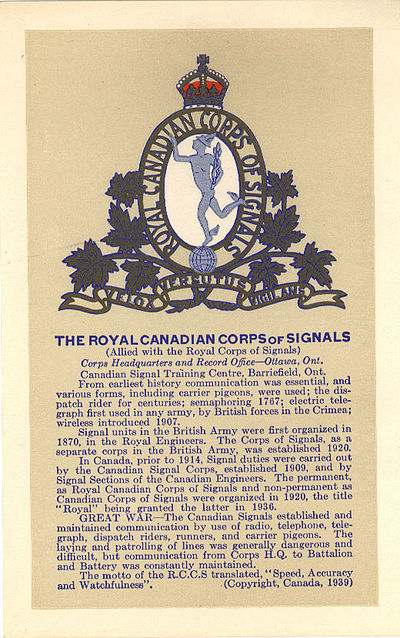Postcard - Corps crest and narrative
A narrative style postcard produced by William Scully during World War 2. Part of a series of cards, it featurs the RCCS (KC) crest and the following narrative:
THE ROYAL CANADIAN CORPS of SIGNALS (Allied with the Royal Corps of Signals) Corps Headquarters and Record Office - Ottawa, Ont. Canadian Signal Training Centre, Barriefield, Ont.
From earliest history communication was essential, and various forms, including carrier pigeons, were used; the dispatch rider for centuries; semaphoring 1767; electric telegraph first used in any army, by British forces in the Crimea; wireless introduced 1907.
Signal units in the British Army were first organized in 1870, in the Royal Engineers. The Corps of Signals, as a separate corps in the British Army, was established 1920.
In Canada, prior to 1914, Signal duties were carried out by the Canadian Signal Corps, established 1909, and by Signal Sections of the Canadian Engineers. The permanent, as Royal Canadian Corps of Signals and non-permanent as Canadian Corps of Signals were organized in 1920, the title "Royal" being granted the latter in 1936.
GREAT WAR - The Canadian Signals established and maintained communication by use of radio, telephone, telegraph, dispatch riders, runners, and carrier pigeons. The laying and patrolling of lines was generally dangerous and difficult, but communication for Corps H.Q. to Battalion and Battery was constantly maintained.
The motto of the R.C.C.S. translated, "Speed, Accuracy and Watchfulness". (Copyright, Canada, 1939)
